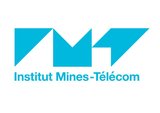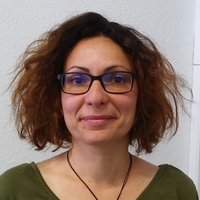Atmospheric Research Infrastructures: Sharing the future of our atmosphere
- Duration: 2 weeks
- Effort: 5 hours
- Pace: ~2h30/week
- Languages: English
What you will learn
At the end of this course, you will be able to:
- assess the role and interest of atmospheric research,
- describe different means of monitoring the atmosphere,
- summarise the goals and framework of three Research Infrastructures (RIs): ACTRIS, IAGOS and ICOS,
- explain the workflow of an atmospheric RI.
- access and process the 3 RIs data on your own.
Description
Air pollution and climate change are two interconnected issues that have become major global concerns. They have an undeniable impact on our health, environment, society and economy. This naturally raises some questions: How do we measure air pollution? How do we monitor climate change? And most importantly, how do we address these issues? The MOOC ‘Atmospheric Research Infrastructures: Sharing the future of our atmosphere’ focuses on cutting-edge research in atmospheric science.
During this course, you will discover how atmospheric Research Infrastructures (RIs) support high-level research and inform political decisions for the benefit of society.
In the first week, you will learn about atmospheric constituents, their sources and impacts, and their complex interactions. You will understand the importance of sharing data and building robust networks between research communities.
During the second week, you will explore different ways to monitor the atmosphere through 3 RIs: ACTRIS, the Aerosol, Clouds and Trace Gases Research Infrastructure; IAGOS, the In-service Aircraft for a Global Observing System; and ICOS, the Integrated Carbon Observation System.
Format
This MOOC takes place over 2 weeks with a commitment of about 2,5 hours per week. However, depending on your own interests and availability, you can choose to follow only the essential parts of the MOOC or go more in-depth by studying the additional materials. Finally, some validation questions are proposed after each section. To allow self-delivery of the material, the quizzes are proposed as multiple-choice questionnaires, which enable full automation of the test administration and open badge process.
Prerequisites
Undergraduate level in science. Basic level in general chemistry.
Assessment and certification
Quizzes will be given at the end of each section and each week to test your knowledge and practical skills. The final assessment consists of 15 multiple-choice questions. These questions ensure that the workflow and the concept of atmospheric research and monitoring have been acquired. A free badge will be delivered to learners who complete the course and quizzes successfully, with 67% of correct answers at the final quiz.
Accessibility
English. Subtitles are available in English, French, Greek, Chinese, Portuguese, Spanish, and German.
Course plan
- Part 1: Air pollution vs. Climate change
- Part 2: Aerosols and Clouds
- Part 3: Trace gases and Greenhouse gases
- Part 4: Atmospheric Research Infrastructures
- Part 5: In-depth Questions & Answers on AP & CC
- Part 1: ACTRIS (Aerosol, Clouds and Trace Gases Research Infrastructure)
- Part 2: IAGOS (In-service Aircraft for a Global Observing System)
- Part 3: ICOS (Integrated Carbon Observation System)
- Part 4: The workflow and benefits of a coordinated approach
- Part 5: MEET the Atmospheric Simulation Chambers
Course team
Véronique Riffault
Categories
Antonia Zogka
Categories
Stéphane Sauvage
Categories
Therese Salameh
Categories
Organizations
License
License for the course content

Attribution-NonCommercial
You are free to:
- Share — copy and redistribute the material in any medium or format
- Adapt — remix, transform, and build upon the material
Under the following terms:
- Attribution — You must give appropriate credit, provide a link to the license, and indicate if changes were made. You may do so in any reasonable manner, but not in any way that suggests the licensor endorses you or your use.
- NonCommercial — You may not use the material for commercial purposes.
License for the content created by course participants

Attribution-NonCommercial
You are free to:
- Share — copy and redistribute the material in any medium or format
- Adapt — remix, transform, and build upon the material
Under the following terms:
- Attribution — You must give appropriate credit, provide a link to the license, and indicate if changes were made. You may do so in any reasonable manner, but not in any way that suggests the licensor endorses you or your use.
- NonCommercial — You may not use the material for commercial purposes.






